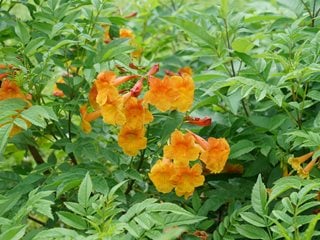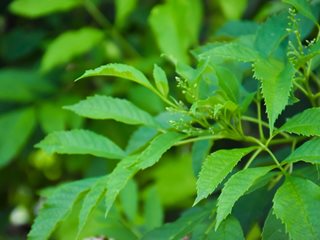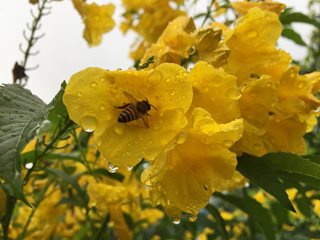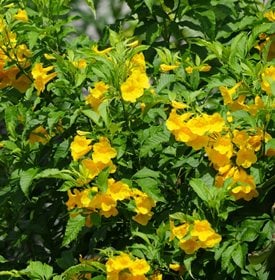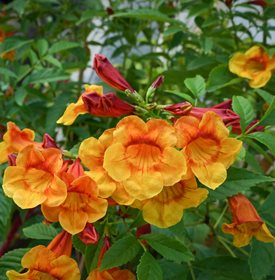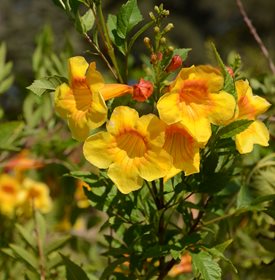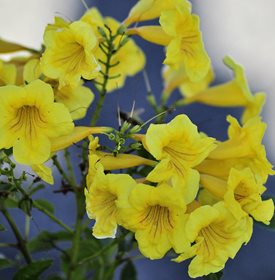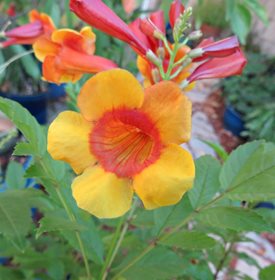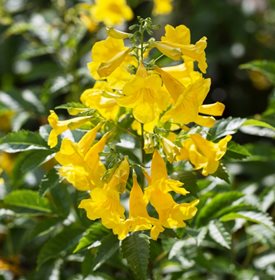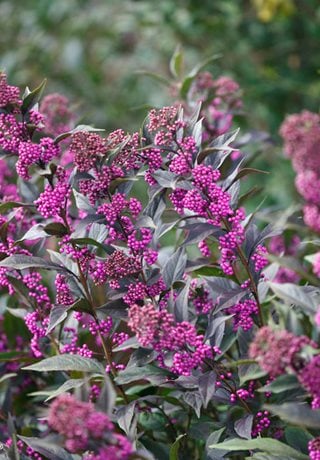A GUIDE TO GROWING ESPERANZA PLANTS
Add tropical flair to your yard with this dazzling, easy-to-grow Tecoma stansIf you like the brightly colored flowers of trumpet vine, esperanza is a good alternative, with compact varieties suitable for small spaces. This evergreen shrub or small tree grows year-round in frost-free regions of California, Arizona, Texas, and Florida. In colder areas, esperanza can be treated as an annual or overwintered indoors in a container.
Esperanza plants add tropical ambience to the landscape with their profuse clusters red, orange, or yellow trumpet-shaped flowers that bloom over an exceptionally long time. Lightly fragrant blooms are a favorite of hummingbirds, butterflies, bees and other insect pollinators. Here’s how to grow and care for this exotic plant.
On this page: Basics | Planting | Care and Maintenance | Pictures | How to Choose the Right Esperanza| Design Ideas
On this page:
- BASICS
- HOW TO PLANT ESPERANZA
- ESPERANZA CARE AND MAINTENANCE
- ESPERANZA PICTURES
- CHOOSING THE RIGHT ESPERANZA
- DESIGN IDEAS
BASICS
Botanical name:
Tecoma stans, syn. Tecoma alata
Common names:
Esperanza, trumpet flower, yellow trumpetbush, yellow bells, yellow elder, Tecoma plant, ginger-thomas, and yellow bignonia.
Native regions:
Native to the Americas from the southern U.S. to Argentina.
Zones:
9-11, though some varieties may survive down to zone 8. In areas that experience light freezes, plants may die back to the ground in winter.
Height/Spread:
Upright bushy habit. In its native habitat, esperanza can reach 15 to 30 feet tall and 10 to 30 feet wide, though plants typically stay smaller in the U.S. Dwarf varieties are smaller.
Exposure:
Full sun
Bloom time:
Spring through frost, with peak flowering in summer. Plants bloom nearly year-round in frost-free climates.
Flowers:
Trumpet-shaped yellow, orange, or red flowers, 3 to 5 inches long, are mildly fragrant. Flower clusters produce up to 50 blooms each. After flowering, plants produce thin bean-like seed pods that start out pale green, turning to brown.
Foliage:
Serrated, glossy green foliage grows opposite each other along slender stems.
Is esperanza invasive?
Tecoma stans has been identified as invasive in some areas of southern Florida; see where.
HOW TO PLANT ESPERANZA PLANTS
When to plant:
Esperanza can be planted during cooler months of spring or fall.
Where to plant:
Place in a site that receives full sun. Plants can tolerate some shade, but may become lanky and produce fewer flowers with less light.
How to plant:
Loosen soil in planting area and amend with compost or other rich organic matter. Dig a hole twice as wide and slightly deeper than the root ball. Remove plant from the nursery container and loosen roots if potbound. Place the plant in the hole so the top of the root ball is level with the surrounding soil. Fill in the hole with soil, tamp down gently to remove air pockets, and water thoroughly. Water regularly until established.
Soil:
Esperanza prefers sandy, rocky, limestone, or loamy soil; it can tolerate almost any well-drained soil. Plants grow best in organically rich soil with a pH from 6.1 to 7.8
For containers:
Make sure pots have adequate drainage holes. Use a high quality all-purpose potting soil and blend with a ratio of 2 parts potting soil, 1 part coarse sand, and 1 part peat moss.
ESPERANZA PLANT CARE
Water:
Esperanza is drought-tolerant once established, but performs best with moderate water. Irrigate regularly, every week to 10 days, allowing plants to dry out between waterings. Plants will need more frequent watering during extreme heat and prolonged dry spells.
Container plants need to be watered more often than those in the ground. Avoid overwatering.
Fertilizer:
Plants need very little supplemental fertilizer. Apply an all-purpose slow-release fertilizer at the time of planting. To increase bloom and vigor for plants in poor soil, feed every one to two months during the growing season with an all-purpose granular or liquid fertilizer. Mulch around the base in spring with a layer of compost.
Container plants will benefit from an application of liquid fertilizer every 4 to 6 weeks in summer.
Pruning:
Esperanza blooms on new wood and needs little or no pruning. Lightly shape after peak bloom, from fall to late winter. Cut out dead or diseased branches at any time of year. Plants can be left as a shrub or trained into a small tree. Cut plants back to the ground if they die back after a hard freeze.
Deadheading:
Deadhead spent flowers in summer to encourage rebloom and trim off seed pods to keep plants tidy.
Pests and diseases:
When planted in the right conditions, plants have few insect or disease problems. Pests include aphids, spider mites, or scale.
ESPERANZA VARIETIES
HOW TO CHOOSE THE RIGHT ESPERANZA
For borders and landscapes: Use medium and large varieties as hedging or privacy screening, or naturalize in the landscape. Dwarf forms can be used as groundcovers, foundation plantings, in curbside strips or massed in the landscape.
For slopes and hillsides: Mass a smaller form along a bank or slope for a carefree display that will also help to stem erosion.
For containers: Smaller specimens are suitable for containers. In climates colder than Zone 9, esperanza can be grown in containers and overwintered indoors.
LANDSCAPE DESIGN TIPS
There are many ways to incorporate esperanza into your landscape. Here’s how:
- Place a smaller variety in a colorful decorative pot and place by your home’s entryway for a dazzling first impression.
- Place a larger form at the end of a pathway as a colorful focal point to draw the eye through the landscape.
- Decorate a sunny apartment balcony with a smaller specimen in a colorful pot.
- Combine a smaller variety of esperanza with other shrubs as a foundation planting along the front of your home.
- Plant a larger variety as a privacy hedge or shrub border along a property line.
- Train a medium-sized variety into a small tree for an elegant accent in a courtyard or border.
- Plant a medium-to-large variety as a stand-alone specimen in an island bed in the lawn.
RELATED:
How to Grow Rose of Sharon
Flowering Shrubs
Tropical Gardens
